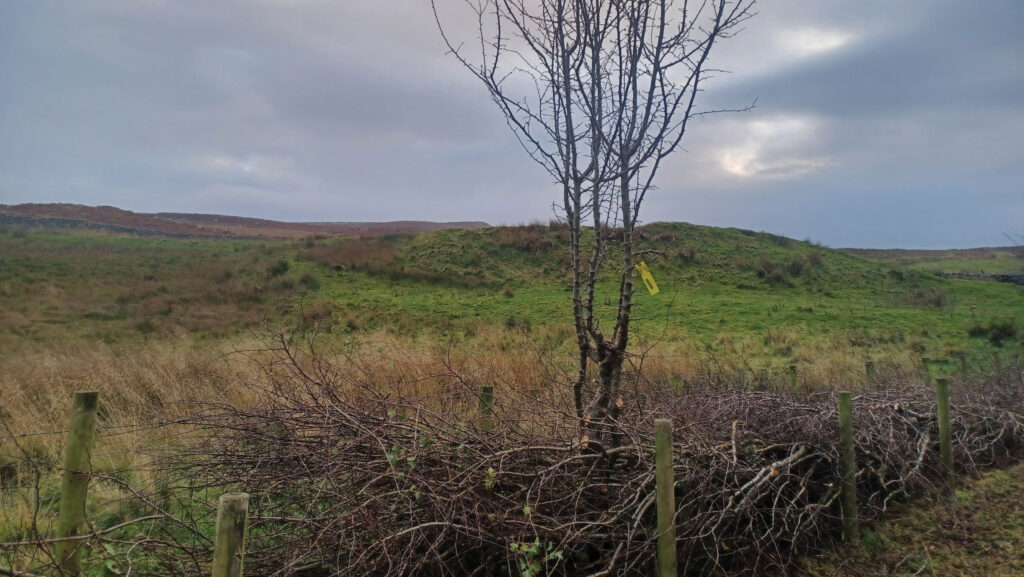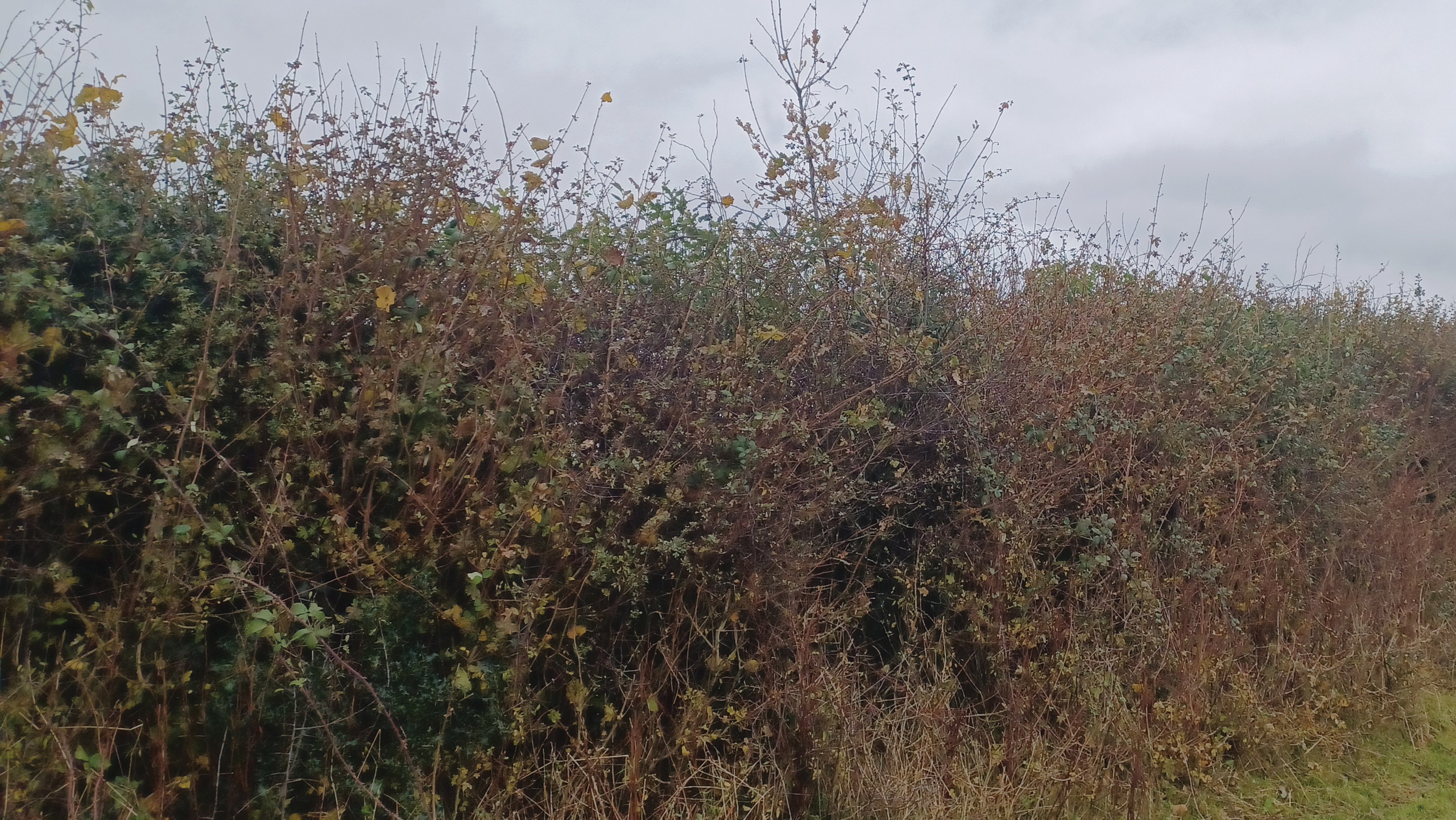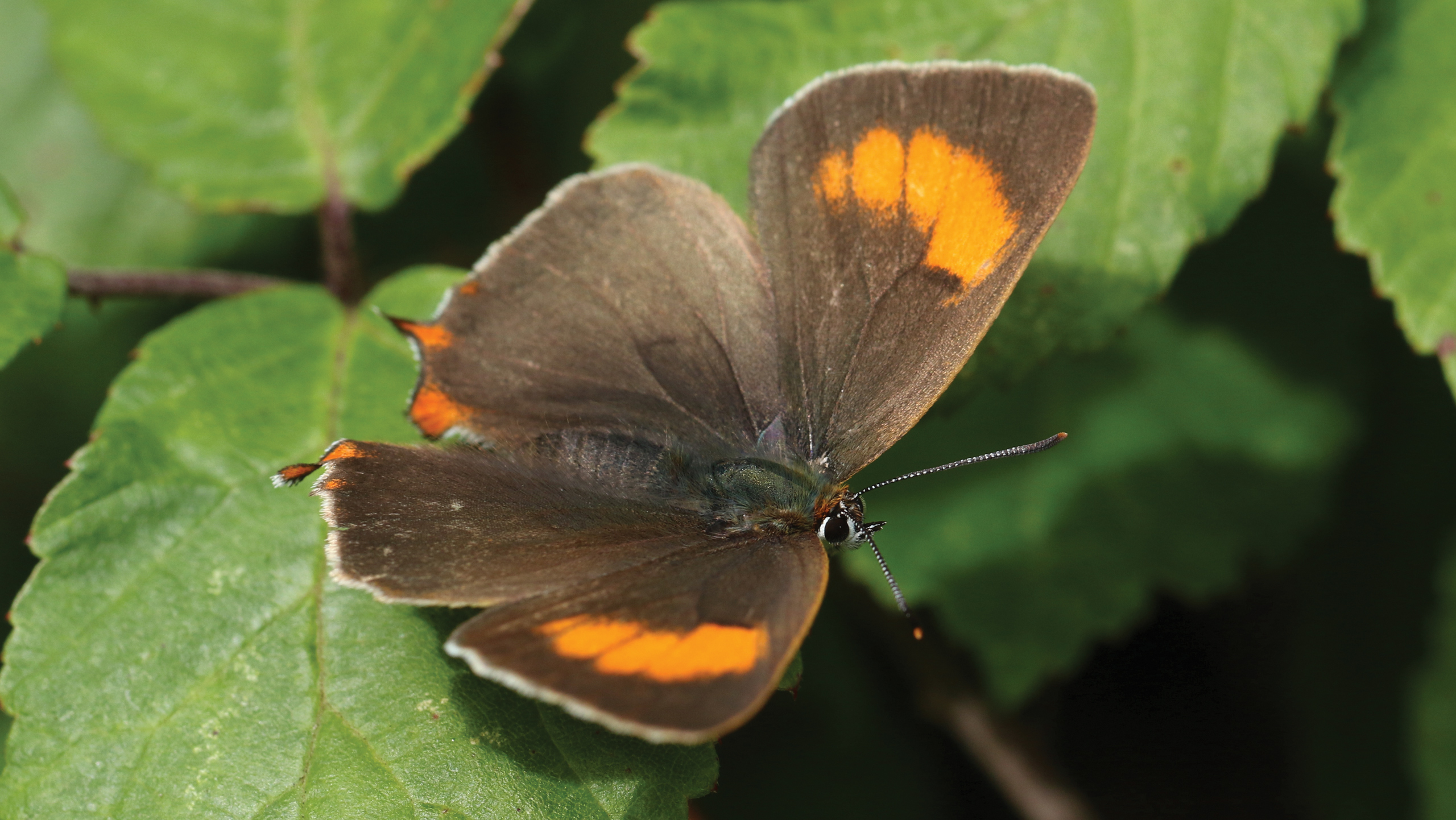Why trees in hedges improve arable farm landscapes
 © Megan Gimber
© Megan Gimber Trees in hedges help with habitat provision and carbon storage, bringing diversity and resilience to the farmed landscape, while providing continuity when hedges are being managed.
For farmers and growers who had their Sustainable Farming Incentive (SFI) applications approved before the scheme closed abruptly in March, there’s also funding to support the maintenance and establishment of hedgerow trees through the action CHRW3.
See also: How to get arable land ditches working for wildlife
That action pays £10 per 100m for both sides of an eligible hedgerow a year, providing there is at least one tree each 100m over the total length.
And while the SFI’s days appear to be numbered, making good use of remaining funding will be a worthwhile investment, as healthy trees will be in place for a long time to come.
What are the on-farm benefits?

Newly established oak tree in hedge © Megan Gimber
Shade, shelter and food are provided by trees, while their ability to store carbon is becoming more valued.
Shade provision will be more critical in future years, believes Megan Gimber, key habitats officer at the People’s Trust for Endangered Species, who points out that heat stress is expected to become more of a problem in livestock as the climate changes.
Shelter on exposed sites is also key, especially where hedges are being managed on a life cycle. “Extra trees in a hedge maintain the benefits and give some continuity until the hedge has grown again.”
Hedge trees can also be fodder, she notes. “Browsing, both direct and indirect, can benefit livestock. Traditionally ash pollards made good fodder and even holly can be a last resort for browsing animals.”
Like the hedge below, the need is for a good mix of native species in hedge trees. “Not only does this provide wildlife with food for a longer period of the year, with the right species chosen and careful placement, trees don’t have to disrupt the business of farming.”
Tree decline
For the past 100 years, the number of trees found in hedgerows has been in sharp decline, says Megan, who highlights the previously devastating impact of Dutch elm disease.
“Disease is one reason for the tree losses we have seen – two world wars were another,” she says. “Trees were used during the wars and in many places they just didn’t get re-established.”
The advent of mechanisation and loss of farm labour meant that as the practice of hedge-laying all but ceased, so did tree establishment, she points out. “When you just trim or flail hedges, it stops new hedge trees from coming through.
“When you lay a hedge, it gives the perfect opportunity to leave a good stem or two standing as a new hedge tree.”
The two main hedge tree species in England are oak and ash. “They are the most frequent species we find, although the situation with ash is changing rapidly, due to the fungal disease ash dieback,” says Megan
How to establish hedge trees
Where you want to retain the genetic diversity and heritage of your hedge, it is possible to encourage trees without having to buy new plants and protect them:
- Leave suitable stems standing when you lay or coppice a hedge, or
- Select a suitable stem, tag or clearly mark it, then spare it from the trim, or
- Coppice a section of hedge and select a strong stem from the regrowth.
Where you want to increase the diversity of a single species hedgerow or don’t have existing suitable stems in the hedge:
- Plant a new tree in a hedge gap, or create a gap, so that the young tree doesn’t have to compete with the surrounding hedge for light and water.
Wildlife support
Over 50% of hedgerow priority species need trees to be able to complete their life cycle.
“Hedgerows with trees mimic the rich structure we find at a woodland edge,” explains Megan. “This combination of features has deep structural roots that echo our ancient pre-agricultural wilderness, to which our ecology adapted.
“The result can be an ecological goldmine capable of supporting literally thousands of species. A hedge without a tree is without a fundamental building block of the habitat.”
A variety of in-hedge trees on the farm is preferable when it comes to wildlife, she advises. “Diversity loves diversity, so having different species is ideal. The brown hairstreak butterfly larvae require young blackthorn for survival, whereas the adults gather to mate at large ash trees.
“The white-letter hairstreak prefers elm, and the black hairstreak favours oak; so even within hairstreak butterflies we have a case for diversity.”
Dead trees also have enormous value and should be kept standing, providing it is safe to leave them in place. Internal decay – if it has reached a certain stage – is a rare habitat, which is why dead trees still count if the SFI action is in place.
What are the wildlife benefits?

Brown hairstreak butterfly © Adobe Stock
Many bird behaviours rely on trees – with territory marking being a good example of why trees are so important, reports Megan.
While they tend to nest in the hedges, birds sing from trees, she points out.
“Trees also provide extra sites for nesting and food,” she says. “When hedges are being cut for management purposes, trees in them will still flower and fruit, providing for wildlife, regardless of what’s going on below.”
Bats need either tall hedges or hedges with trees, she continues. “They use trees for roosting and for connectivity, so tall structures really help. They also provide shelter for everything, including flying insects, which bats use for food.”
Sometimes referred to as predator perches, trees aren’t suitable everywhere, she cautions.
“Where you have very open landscape characteristics, such as those favoured by ground nesting birds, you need to be sensible about where you add new trees. Wading birds in wetlands are another consideration; we don’t want to increase mortality rates of sensitive populations.”
Where to establish hedgerow trees
- Large trees like oak or beech in east-west aligned hedges cast valuable in-field shade for livestock. In north-south hedges, they cast most of their shade on the hedge, not the fields.
- Small hedge trees such as hawthorn, damson and crab apple will cast much less shade, if it is not desired.
- Trees in hedges with field margins or next to farm tracks will reduce any water and shade impacts on crops.
- Clusters of trees in hedge corners and gateways, or where flail heads would already be raised, minimise additional trimming time.
- Place trees where they can offer valuable extra shelter from the wind.
- Cluster trees in awkward areas, such as steep or wet land, or where less frequent trimming is required.
- Extra trees in hedges which link up woodlands help the hedge act as a corridor for woodland species.
- Plan hedgerow tree locations and species when planting new hedges so that shade-tolerant hedge species, such as holly and hazel, can be planted either side if deep shade is going to be cast.
- In hawthorn and blackthorn dominant hedges, plant trees that don’t throw deep shade or use smaller trees.
This article is the second in a series looking at natural on-farm features and the contribution they make to wildlife and biodiversity, as well as funding opportunities and sources of specialist advice. The first article in the series focuses on land ditches for wildlife.

